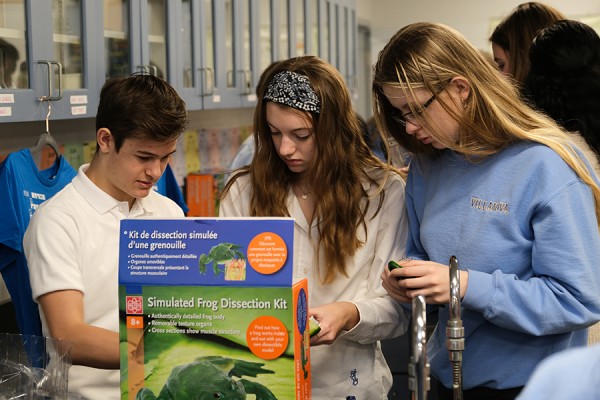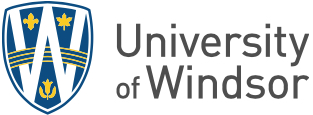 Grade 10 students at LaSalle’s Villanova high school look over a simulated frog dissection kit.
Grade 10 students at LaSalle’s Villanova high school look over a simulated frog dissection kit.
The Windsor-Essex Catholic District School Board will gradually phase out animal dissection in high school classrooms and replace it with virtual technology, thanks to the efforts of UWindsor’s Canadian Centre for Alternatives to Animal Methods (CCAAM).
CCAAM’s executive director Charu Chandrasekera and UWindsor dean of science Chris Houser were on hand at a Wednesday event at St. Thomas of Villanova Catholic High School where the board’s executive superintendent of innovation and experiential learning, Dan Fister, made the announcement.
“Animal dissection is academically unnecessary and, despite its prevalence in North American schools, it is not practiced worldwide,” Fister said. “We believe this is a more ethical, humane and engaging way to teach students science and we hope this sets an example for school boards right across Canada.”
Dr. Chandrasekera led Grade 10 students and guests through a hands-on tutorial with a “faux frog dissection kit” comprising reusable model frogs (Edu-Science Simulated Frog Dissection Kit and 4D Vision Frog), virtual anatomy software (Biosphera Frog and 3D4 Medical Essential Human Anatomy), and the Virtuali-Tee augmented reality app to visualize human anatomy. All of the board’s eight high schools have now received these kits, donated to CCAAM by the Johansen-Larsen Foundation and the Eric S. Margolis Family Foundation.
“Today’s non-animal technologies help students build a strong knowledge base and achieve curricular learning objectives, all while promoting scientific curiosity and a passion for the discipline,” Chandrasekera said.
She said studies have shown that virtual alternatives are comparable, and even superior, to learning with actual animals.
Dr. Houser said he hopes more students benefit from access to these methods.
“Introducing this technology into the curriculum is an exciting and humane way to engage students that I hope becomes a model for other school boards across Ontario and across Canada,” he said.
The partnership will also give these high schoolers access to the University’s state-of-the-art Eric S. Margolis Training Laboratory for Alternatives to Animal Methods, where they will work with Chandrasekera on contemporary technology that simulates actual cadavers, the Anatomage virtual dissection table, donated by the Animal Defence League of Canada and the Royal Bank of Canada Wealth Management.
Gisele Jobin, a science curriculum consultant with the board, says students are more excited and engaged in learning through the use of these new methods.
“This new technology is the way of the future for accessing curriculum and creating meaningful and lasting educational experiences for our students,” she said.
